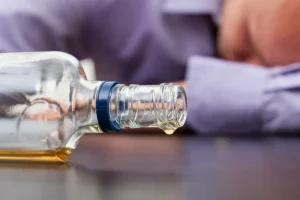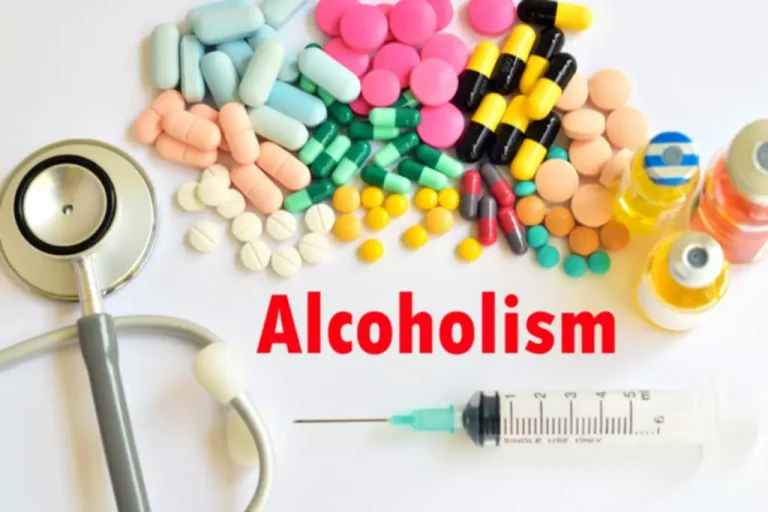
The findings from this study provide qualitative and quantitative support abstinence violation effect for the conceptualization of post-treatment drinking behavior as a cusp catastrophe. The qualitative characteristics of relapse as a catastrophe were supported by reviewing results from a variety of empirical studies. The stochastic catastrophe models fit much better than comparison linear and logistic models. A theoretically derived model of proximal and distal relapse risk factors, replicating the model proposed by Hufford et al. (2003), provided the best fit in a catastrophe model of post-treatment drinking quantity, when the model only included those individuals who were drinking. The models that included non-drinkers did not provide a better fit to the observed data when control parameters were added to the model. It is hypothesized that including non-drinkers creates a mode of zeros and under these circumstances the complexity and variation in drinking behavior is not actualized by the proposed risk factors.
- In this model, treatment success is defined as achieving and sustaining total abstinence from alcohol and drugs, and readiness for treatment is conflated with commitment to abstinence (e.g., Harrell, Trenz, Scherer, Martins, & Latimer, 2013).
- Although non-dieters ate less after consuming the milkshakes, presumably because they were full, dieters paradoxically ate more after having the milkshake (Figure 1a).
- There are several factors that can contribute to the development of the AVE in people recovering from addiction.
- Future research could further investigate potential differences between the predictors of relapse in physical activity and dietary behavior, and between lapse and relapse.
- He reported difficulty sleeping if he did not drink, could not get past the day without drinking or thinking about his next drink (establishment of a dependence pattern).
Relapse prevention, recovery management, recovery transcendence
- Fortunately, professional treatment for addiction can improve outcomes for people experiencing the Abstinence Violation Effect.
- Witkiewitz (2004, 2005) used a type of person-centered analysis called latent growth mixture modeling to assess the within-person variability in drinking behavior during the 12-months following treatment.
- The Trans theoretical model (TTM), describes stages of behavioral change, processes of change and the decisional balance and self-efficacy which are believed to be intertwined to determine an individual’s behaviour11.
In the current study we used listwise deletion, such that any participant contributing any missing information is deleted from the analyses. Other investigators may chose to use an imputation procedure, such as multiple imputation (Schafer & Graham, 2002), which would allow for missing data to be generated by the relationships between the missing information and the full information available to the researcher. By substituting a range of values for the splitting (b) and normal (a) parameters, a range of values for Z is obtained and can be plotted in three dimensions, as shown in Figure 2. The bottom surface of the model, called the control plane, is defined by the range of the two control parameters. The top surface, called the behavior plane, is defined as the range of behavior values based on the values of the two control parameters (the values obtained when solving for Equation 2).
- Regardless of how we define relapse, the treatment outcome literature clearly demonstrates that some transgression is the most common outcome following treatment for a variety of psychological and substance use disorders.
- One critical goal will be to integrate empirically supported substance use interventions in the context of continuing care models of treatment delivery, which in many cases requires adapting existing treatments to facilitate sustained delivery 140.
- Indeed, this argument has been central to advocacy around harm reduction interventions for people who inject drugs, such as SSPs and safe injection facilities (Barry et al., 2019; Kulikowski & Linder, 2018).
- Other more general strategies include helping the person develop positive addictions and employing stimulus-control and urge-management techniques.
Learn From Relapse
Self- efficacy increases and the probability of relapsing decreases when one is able to cope with this situation31. Various psychological factors were significant in initiating and maintaining Rajiv’s dependence on alcohol. At the start of treatment, Rajiv was not keen engage to in the process of recovery, having failed at multiple attempts over the years (motivation to change, influence of past https://ecosoberhouse.com/ learning experiences with abstinence). Results of a preliminary nonrandomized trial supported the potential utility of MBRP for reducing substance use.
- Despite compatibility with harm reduction in established SUD treatment models such as MI and RP, there is a dearth of evidence testing these as standalone treatments for helping patients achieve nonabstinence goals; this is especially true regarding DUD (vs. AUD).
- Thus, whereas tonic processes can determine who is vulnerable for relapse, phasic processes determine when relapse occurs 8,31.
- Whereas most theories presume linear relationships among constructs, the reformulated model (Figure 2) views relapse as a complex, nonlinear process in which various factors act jointly and interactively to affect relapse timing and severity.
- In the next section we provide a complete picture of these relapse risk factors by applying a dynamical systems model to the relapse process.
Relapse Prevention
In addition to shaping mainstream addiction treatment, the abstinence-only 12-Step model also had an indelible effect on the field of SUD treatment research. Most scientists who studied SUD treatment believed that abstinence was the only acceptable treatment goal until at least the 1980s (Des Jarlais, 2017). Abstinence rates became the primary outcome for determining SUD treatment effectiveness (Finney, Moyer, & Swearingen, 2003; Kiluk, Fitzmaurice, Strain, & Weiss, 2019; Miller, 1994; Volkow, 2020), a standard which persisted well into the 1990s (Finney et al., 2003). Little attention was given to whether people in abstinence-focused treatments endorsed abstinence goals themselves, or whether treatment could help reduce substance use and related problems for those who did not desire (or were not ready for) abstinence. Rather, when people with SUD are surveyed about reasons they are not in treatment, not being ready to stop using substances is consistently the top reason cited, even among individuals who perceive a need for treatment (SAMHSA, 2018, 2019a). Even among those who do perceive a need for treatment, less than half (40%) make any effort to get it (SAMHSA, 2019a).

It is now believed that relapse prevention strategies must be taught to the individual during the course of therapy, and various strategies to enhance patient involvement and adherence such as increasing patient responsibility, promoting internal attributions to events are to be introduced in therapy. Working with a variety of targets helps in generalization of gains, patients are helped in anticipating high risk situations33. In conclusion, the abstinence violation effect is a psychological effect that impacts those in recovery, as well as those who are focused on making more positive behavioral choices in their lives.


Pas encore de commentaire
Vous pouvez être le premier à poster un commentaire.